Effect of Fermentation with Single and Co-culture of Lactobacillus bulgaricus and Streptococcus thermophilus on the Quality of Yogurt
-
摘要: 为研究保加利亚乳杆菌与嗜热链球菌单菌发酵与复配发酵对酸奶品质的影响,本实验采用保加利亚乳杆菌与嗜热链球菌单菌发酵和复配发酵两种方式,通过对比两种发酵方式制得酸奶发酵特性、流变特性、质构特性和感官特性等指标,系统全面揭示两种发酵方式对酸奶品质的影响。结果表明,复配发酵的酸奶凝乳时间为8 h,比单菌发酵酸奶的发酵时间更短,更先达到发酵终点70 °T。感官评价表明,复配发酵方式制得的酸奶感官评分优于单菌发酵制得的酸奶,且保加利亚乳杆菌与嗜热链球菌的最佳复配比为3:7。流变特性测定结果表明,复配发酵酸奶的表观黏度为0.4~0.5 Pa·s低于单菌发酵酸奶的1.6~1.9 Pa·s。质构数据显示,复配发酵酸奶的硬度、黏度和黏聚性绝对值均显著低于单菌发酵酸奶(P<0.05)。将单菌发酵酸奶和最佳配比复配发酵酸奶进行电子鼻和电子舌检测,结果表明复配发酵酸奶挥发性风味在电子鼻传感器上的气味响应值强于单菌发酵酸奶。在滋味方面,与单菌发酵酸奶相比,复配发酵酸奶在电子舌各个探头的响应值表现更为均衡。通过主成分分析发现,电子鼻和电子舌均能有效区分两种发酵方式之间的差异。综上,与单菌发酵方式相比,复配发酵方式能够有效缩短酸奶发酵时间,且发酵出的酸奶品质更好。Abstract: In order to investigate the effects of fermentation with single and co-culture of Lactobacillus bulgaricus and Streptococcus thermophilus on the quality of yogurt, the fermentation characteristics, sensory features, rheology and texture of yogurt produced by the above two fermentation approaches were tested. The results showed that the curdling time of co-culture fermented yogurt was 8 h, which was shorter than that of single-strain fermented yogurt, and reached the end point of fermentation at 70 °T earlier. Sensory evaluation evaluated that the scores of co-culture fermentation yogurt were higher than that of single culture yogurt. Moreover, the ratio of Lactobacillus bulgaricus and Streptococcus thermophilus was 3:7 with the highest score. The measurement results of rheological properties showed that the apparent viscosity of co-culture fermented yogurt was 0.4~0.5 Pa·s lower than that of single-bacteria fermented yogurt of 1.6~1.9 Pa·s. As for texture analysis, the hardness, viscosity and absolute value of cohesiveness of co-culture fermented yogurt were significantly lower than that of single culture yogurt (P<0.05). The data of electronic nose showed that the odor of co-culture fermented yogurt was stronger than that of single bacteria fermented yogurt. In addition, electronic tongue test showed that the co-culture fermented yogurt exhibited more balanced in terms of different tastes. Electronic nose and electronic tongue could effectively distinguish the difference between single and co-culture fermented yogurt through principal component analysis. Based on the above results, the taste and flavor of co-culture fermented yogurt are better than that of single bacteria fermented ones.
-
酸奶是一种常见的乳制品,因其有独特的质地和风味,备受消费者喜爱。酸奶的制作是由乳酸菌将牛乳中的乳糖发酵产生乳酸使其胶凝化形成的[1]。因此,酸奶的品质与乳酸菌有着密不可分的关系。目前常用发酵菌株主要为保加利亚乳杆菌与嗜热链球菌[2]。李婷等[3]利用分离自传统发酵乳中的7株保加利亚乳杆菌为试验菌株进行酸奶发酵,筛选出一株具有优良发酵特性的保加利亚乳杆菌。丹彤等[4]利用SPME-GC-MS对嗜热链球菌发酵的酸奶进行分析,确定嗜热链球菌具有良好的发酵性能,可作为发酵剂应用于乳制品生产中。但目前,更多研究则表明将两种菌通过一定比例复配协同发酵,发酵速度更快,风味更佳[5-6]。在协同发酵过程中,嗜热链球菌率先利用乳糖分解产生有机酸,进而促进保加利亚乳杆菌的生长。随后,保加利亚乳杆菌代谢产生的一些氨基酸与缬草碱也有助于嗜热链球菌的生长[7-10]。
酸奶品质评价中,报道中以人为主导的感官评价方式较多,但感官评价易受多种因素影响,较难获得一致结果,误差较大[11]。随着科技发展,更多先进检测分析设备应用到酸奶品质评价中,如质构仪、流变仪、电子鼻、电子舌等[12-18],能够提供全面客观的评价结果。在酸奶质构检测方面,单一保加利亚乳杆菌和嗜热链球菌生产的酸奶硬度和胶粘性最高,两菌混合硬度和胶粘性明显降低,在感官评价中硬度和胶黏性低的混合发酵酸奶口感更佳[19]。流变学性质检测中,表观黏度在0.5~0.6 Pa·s的酸奶更易被消费者接受[20]。为了更客观地评价不同酸奶之间的品质,任敏等[21]通过电子鼻与电子舌技术,结合多元统计分析对不同乳酸乳球菌发酵的酸奶进行风味与滋味品质评价,主成分分析表明不同酸奶的风味特征呈分离趋势。
目前,对于保加利亚乳杆菌与嗜热链球菌单菌发酵与复配发酵对酸奶品质影响研究比较有限,缺乏综合系统客观评价体系。本实验通过流变仪、质构仪、电子鼻和电子舌等检测设备相结合,从硬度、黏度、表观黏度、香味及滋味上评价两种发酵方式对酸奶品质的影响,从而为单菌发酵与复配发酵酸奶的品质评价体系建立提供数据支持和理论依据。
1. 材料与方法
1.1 材料与仪器
安佳脱脂乳粉 购置于新西兰恒天然公司;MRS肉汤培养基、MRS琼脂培养基 购置于海博生物公司;白砂糖 购置于上海市糖业烟酒集团;菌种 为实验室鉴定保存的保加利亚乳杆菌与嗜热链球菌。
TA.XT Plus质构仪 英国Stable Micro System公司;DISCOVERY HR-1 旋转流变仪 美国TA仪器;FOX 4000型电子鼻 法国Alpha MOS公司;Astree 电子舌 法国Alpha MOS公司;HMC-203D磁力搅拌器 上海沪析实业有限公司;NS1001L2K均质机 意大利GEA公司;GHP-9080隔水式恒温培养箱 青岛司尔特实验设备有限公司;Centrifuge5810R离心机 德国Eppendorf公司;2.5 mL气密性微量取样器 瑞士 Hamilton公司。
1.2 实验方法
1.2.1 实验设计
以牦牛酸奶源提取鉴定的两株保加利亚乳杆菌G114(A)与G119(B)与实验室保存的嗜热链球菌Q019(C)进行单菌发酵与复配发酵,预实验确定菌液添加量为5×106 CFU/mL,以酸度70 °T为发酵终点,菌株A、B与C的复配分别组成AC-3:7、AC-5:5、AC-7:3、BC-3:7、BC-5:5、BC-7:3,6个复配发酵组,探究单菌发酵与复配发酵之间的发酵时间。通过感官评价确定复配发酵的最优配比,再将最优配比与3组单菌发酵乳进行质构、流变、电子鼻和电子舌测定,对比单菌发酵乳与复配发酵乳的差异。
1.2.2 酸奶制备
按照搅拌型酸奶工艺流程进行制作[22],添加12%的脱脂乳粉与水充分混合,以800 r/min磁力搅拌30 min,使其充分复水,后在20 MPa压力条件下均质2次,采用70 ℃巴氏杀菌30 min,冷却至40 ℃时,按照复原乳体积5%接种菌液,在42 ℃恒温条件下发酵,每小时取一次样测定酸度,待滴定酸度大于70 °T时,停止发酵,再将发酵好的酸奶放入4 ℃冰箱冷藏过夜,以待备用。
1.2.3 酸度测定
搅拌型酸奶发酵酸度一般为70 °T时,口感最佳,而且酸度增长的快慢决定酸奶的发酵时间。参照国标GB 5009.239-2016《食品酸度的测定》中酚酞指示剂测定方法测定酸奶发酵酸度。每1 h从培养箱中取样,称取10.0 g酸奶于锥形瓶中,加入20 mL纯水混匀,使用0.1 mol/L NaOH滴定,直至酸度达到70 °T停止取样,记录发酵时间。每个样品重复测定3次。
1.2.4 感官评价
参考RHB 103-2004《酸牛乳感官质量评鉴细则》中搅拌型酸奶感官评分表进行感官评价。选择10名食品专业人员集中培训后参照评分表进行感官评价(表1),依照感官评分高低,确定最佳配比。
表 1 搅拌型酸奶感官评价表Table 1. Sensory evaluation form for stirred yogurt项目 内容 分值(分) 色泽
(10分)呈均匀乳白色、微黄色或果料固有颜色 9~10 淡黄色 6~8 浅灰色或灰白色 3~5 绿色、黑色斑点或霉菌生长、异常颜色 0~2 滋味和风味(40分) 具有酸牛乳固有滋味和气味或相应的果料味,酸味和甜味比例适当 36~40 过酸或过甜 21~35 有涩味 11~20 有苦味 6~10 异常滋味或气味 0~5 组织状态
(50分)组织细腻、凝块细小均匀滑爽、无气泡、无乳清析出 41~50 组织细腻、凝块大小不均、无气泡、有少量乳清析出 31~40 组织粗糙、不均匀,无气泡、有少量乳清析出 21~30 组织粗糙、不均匀,有气泡、有乳清析出 11~20 组织粗糙、不均匀,有大量气泡、乳清析出严重、有颗粒 0~10 1.2.5 质构特性测定
参照汪秀妹等[17]方法,略有改动。采用 TA-XT Plus质构仪Dairy Yoghurt back extrusion模式测试,选用35 mm饼状探头,测试距离为10 mm,触发点为10.0 g,测前速度6 mm/s,测中速度为 2 mm/s,测后速度为2 mm/s。测定酸奶的硬度、黏度与黏聚性。
1.2.6 流变特性测定
在赵红玲等[20]的方法上略有改动,流变仪选取转子型号为直径60 mm,测试间距为1000 μm,剪切速率的范围为0.1~100 s−1,取50个点进行测试,对酸奶表观黏度的测定。
1.2.7 电子鼻测定
通过电子鼻对不同发酵酸奶进行气味测定。移取3 mL酸奶于顶空瓶中,在40 ℃条件下预热5 min后,用取样器吸取2 mL孵化好的气样,注入分析仪中测样。每个样品重复测定10次。传感器及对应感应物类型见表2。
表 2 电子鼻传感器序列Table 2. Sequences of the electronic nose sensors序号 传感器类型 感应物类型 序号 传感器类型 感应物类型 1 LY2/LG 氟、氮氧化物 10 P40/1 氯、氟 2 LY2/G 氨、胺类化合物 11 T70/2 甲苯、二甲苯 3 LY2/AA 醇、酮类 12 PA/2 醇类、胺类化合物 4 LY2/Gh 氨、胺类化合物 13 P30/1 碳氢化合物 5 LY2/gCTl 硫化物 14 P40/2 氟化物、硫化物 6 LY2/gCT 烷烃类 15 P30/2 酮类、硫化氢 7 T30/1 极性化合物 16 T40/2 氯 8 P10/1 氨、氯化合物 17 T40/1 氟 9 P10/2 烷烃类 18 TA/2 乙醇 1.2.8 电子舌测定
利用电子舌对不同发酵酸奶的酸味、甜味、咸味和鲜味进行测定。量取150 mL酸奶于瓶中,加入200 mL纯水混匀后,减压过滤,量取80 mL清液于100 mL烧杯中,进行滋味测定。每个样品重复测定5次。电子舌传感器及表达味觉类型见表3。
表 3 电子舌传感器Table 3. The sensors of electronic tongue序号 传感器类别 传感器表达味觉 1 AHS 酸味 2 ANS 甜味 3 CTS 咸味 4 NMS 鲜味 1.3 数据处理
采用Excel与SPSS软件对实验数据进行统计学分析,应用Origin 2021软件进行作图。
2. 结果与分析
2.1 不同发酵方式对酸奶发酵时间的影响
以酸度70 °T为发酵终点,单菌发酵酸奶与复配发酵酸奶的酸度随时间的变化结果如图1所示。
0~5 h时,单菌发酵酸奶与复配发酵酸奶的发酵酸度从15 °T增长到25 °T左右,增长较为缓慢。5 h之后,各组酸奶的酸度增长速度加快,在6~7 h时复配发酵酸奶的酸度从30 °T急剧上升到60 °T,增长速度明显快于单菌发酵酸奶,在8 h时到达发酵终点70 °T,而3组单菌发酵酸奶则在9 h时到达发酵终点,结果表明复配发酸奶的发酵时间快于单菌发酵酸奶。侯团伟等[23]研究表明,双菌复配发酵产酸能力优于单菌发酵,发酵时间更短,与本实验结果一致。复配发酵时间短于单菌发酵时间,原因可能为在发酵初期主要以嗜热链球菌生长为主,嗜热链球菌通过糖酵解途径产生甲酸、叶酸等有机物促进保加利亚乳杆菌生长,而保加利亚乳杆菌在生长过程中代谢产生有促进嗜热链球菌生长的氨基酸和多肽类,两菌呈相互促进的关系[24]。
2.2 感官评价结果
将单菌发酵酸奶与复配发酵酸奶进行感官评价,结果如图2所示。
在色泽方面,单菌发酵与复配发酵酸奶的评分均在8~9分,显著性分析表明差异不显著(P>0.05)。在风味与滋味上,单菌发酵与复配发酵酸奶的评分结果显示,单菌发酵酸奶A、B、C分值低于复配发酵酸奶。在组织状态方面,复配发酵酸奶AC-3:7与BC-3:7评分最高,均为44分,显著性分析结果表明,单菌发酵与复配发酵酸奶在组织状态上差异不显著(P>0.05)。在总分评价上面,复配发酵酸奶总分高于单菌发酵酸奶,其中评分最高的两个组别为AC-3:7 与BC-3:7,分别为87.9分与88.1分。田佳乐[25]对保加利亚乳杆菌与嗜热链球菌复配发酵酸奶的感官测定结果显示,嗜热链球菌的添加量多于保加利亚乳杆菌时,评分最高,与本研究结果相同,可能是由于嗜热链球菌占比较多时酸奶色泽、质地更均匀,风味更好。通过感官评价确定了最佳复配发酵酸奶AC-3:7和BC-3:7,后续试验以最佳复配酸奶组与3组单菌发酵酸奶进行理化分析。
2.3 质构特性结果
将感官评价总分最高的2组复配发酵酸奶AC-3:7和BC-3:7与3组单菌发酵酸奶进行质构测定,结果如表4所示。
表 4 质构检测结果Table 4. Texture test results样品名称 硬度(g) 黏度(g·s) 黏聚性(g) A 21.73±0.26b 469.68±5.24b −8.23±0.35b B 23.4±0.54a 505.48±9.11a −8.63±0.18b C 24.18±0.1a 501.63±5.34a −9.78±0.41c AC-3:7 19.96±0.37c 431.33±4.73c −7.51±0.31a BC-3:7 18.77±0.69d 392.47±0.37d −7.18±0.31a 注:同列不同字母表示显著性差异(P<0.05)。 单菌发酵酸奶A、B、C与复配发酵酸奶AC-3:7、BC-3:7在硬度、黏度以及黏聚性绝对值均存在显著性差异(P<0.05)。单菌发酵酸奶的硬度、黏度均大于复配发酵酸奶,由于嗜热链球菌在发酵初期率先生长,产生有利于保加利亚乳杆菌生长的甲酸等物质,待条件适宜时,保加利亚乳杆菌迅速生长并产酸使酸奶pH迅速下降,使得酸奶快速形成三维网状结构[26],对复配发酵酸奶的硬度及黏度产生影响[19]。结合林芳栋等[27]的报道,酸奶越稠厚、黏聚性绝对值越大,对活塞下压时的抵抗力越大,说明酸奶爽滑性、细腻度越差,黏聚性绝对值较小时,酸奶更丝滑,在口感上越佳。结合本研究感官评价结果与质构结果分析,证实了口感较好的复配发酵酸奶在硬度、黏度、黏聚性绝对值上小于单菌发酵酸奶。
2.4 流变特性结果
对两组最优配比的复配发酵酸奶与单菌发酵酸奶进行流变学分析,结果如图3所示。
在25 ℃恒速条件下,测定出单菌发酵酸奶的初始表观黏度为1.6~1.9 Pa·s高于复配发酵酸奶的0.4~0.5 Pa·s。随着剪切时间的延长,表观黏度逐步下降,在终点时,单菌发酵酸奶的表观黏度为0.18 Pa·s,是复配发酵酸奶的表观黏度(0.09 Pa·s)的2倍,在流变学性质中,复配发酵酸奶的表观黏度低于单菌发酵酸奶。当初始表观黏度在0.5~0.6 Pa·s范围内时,搅拌型酸奶的口感更佳[20]。结合本文感官评价分析,表观黏度相对较小的酸奶,更易被大众接受。
2.5 电子鼻分析
利用电子鼻对单菌发酵与复配发酵酸奶进行测定,传感器及对应感应物类型见表2,结果如图4所示。
如图4(A)所示,1(氟、氮氧化物)、2(氨、胺类化合物)、3(醇、酮类)、4(氨、胺类化合物)、5(硫化物)、6(烷烃类),6组传感器对单菌发酵与复配发酵酸奶气味表达不明显,其余12组传感器都有不同程度的感应,单菌发酵酸奶A、B在其余传感器上响应值最弱,在0.4~0.7之间,单菌发酵酸奶C次之,在0.4~0.9之间,复配发酵酸奶AC-3:7、BC-3:7响应值最高,在0.5~0.95之间,通过电子鼻气味传感器的响应值显示,复配发酵酸奶的气味表达强度高于单菌发酵酸奶[28]。在PCA分析中,样品间的距离越近说明其气味特性越近,即距离可以量化样品间的气味差异[29]。如图4(B)所示,保加利亚乳杆菌酸奶A、B气味相近,复配发酵酸奶AC-3:7、BC-3:7气味相近,而嗜热链球菌酸奶C,相对独立,不同方式发酵酸奶分离趋势明显,表明单菌发酵与复配发酵酸奶在气味表达上具有差异。
2.6 电子舌分析
如图5(A)所示,单菌发酵酸奶A在咸味传感器上表达最强,B在甜味传感器上表达最强,C在酸味传感器上表达最强。复配发酵酸奶除了BC-3:7在鲜味传感器上表达最强外,其余滋味表达与复配发酵酸奶AC-3:7的滋味在传感器相对强度上表现较为均衡,结合感官评价结果,可知滋味表现更为均衡的复配发酵酸奶更易被大众喜爱。电子舌数据主成分分析,图中样品分布距离越远,表示样品之间的滋味差异越大[30],结果如图5(B)所示,PC1与PC2累积贡献值为90.2%。由图可知单菌发酵酸奶A、B、C与复配发酵酸奶AC-3:7、BC-3:7的滋味存在明显差异,而单菌发酵酸奶A、B之间差异较小。电子舌能有效区分单菌发酵与复配发酵酸奶的滋味差异。
3. 结论
与单菌发酵酸奶相比,复配发酵酸奶在8 h时凝乳,能够有效缩短酸奶发酵时间,且在感官评价中分值更高。在流变仪、质构仪、电子鼻和电子舌等检测结果表明,复配发酵酸奶的硬度、黏度、黏聚性、表观黏度相较于单菌发酵酸奶更低,且在气味传感器上的响应值更高,滋味更均衡。通过以上技术全面评价两种发酵方式对酸奶品质的影响,从而为单菌发酵与复配发酵酸奶的品质评价体系建立提供了一定的数据支持和理论依据。
-
表 1 搅拌型酸奶感官评价表
Table 1 Sensory evaluation form for stirred yogurt
项目 内容 分值(分) 色泽
(10分)呈均匀乳白色、微黄色或果料固有颜色 9~10 淡黄色 6~8 浅灰色或灰白色 3~5 绿色、黑色斑点或霉菌生长、异常颜色 0~2 滋味和风味(40分) 具有酸牛乳固有滋味和气味或相应的果料味,酸味和甜味比例适当 36~40 过酸或过甜 21~35 有涩味 11~20 有苦味 6~10 异常滋味或气味 0~5 组织状态
(50分)组织细腻、凝块细小均匀滑爽、无气泡、无乳清析出 41~50 组织细腻、凝块大小不均、无气泡、有少量乳清析出 31~40 组织粗糙、不均匀,无气泡、有少量乳清析出 21~30 组织粗糙、不均匀,有气泡、有乳清析出 11~20 组织粗糙、不均匀,有大量气泡、乳清析出严重、有颗粒 0~10 表 2 电子鼻传感器序列
Table 2 Sequences of the electronic nose sensors
序号 传感器类型 感应物类型 序号 传感器类型 感应物类型 1 LY2/LG 氟、氮氧化物 10 P40/1 氯、氟 2 LY2/G 氨、胺类化合物 11 T70/2 甲苯、二甲苯 3 LY2/AA 醇、酮类 12 PA/2 醇类、胺类化合物 4 LY2/Gh 氨、胺类化合物 13 P30/1 碳氢化合物 5 LY2/gCTl 硫化物 14 P40/2 氟化物、硫化物 6 LY2/gCT 烷烃类 15 P30/2 酮类、硫化氢 7 T30/1 极性化合物 16 T40/2 氯 8 P10/1 氨、氯化合物 17 T40/1 氟 9 P10/2 烷烃类 18 TA/2 乙醇 表 3 电子舌传感器
Table 3 The sensors of electronic tongue
序号 传感器类别 传感器表达味觉 1 AHS 酸味 2 ANS 甜味 3 CTS 咸味 4 NMS 鲜味 表 4 质构检测结果
Table 4 Texture test results
样品名称 硬度(g) 黏度(g·s) 黏聚性(g) A 21.73±0.26b 469.68±5.24b −8.23±0.35b B 23.4±0.54a 505.48±9.11a −8.63±0.18b C 24.18±0.1a 501.63±5.34a −9.78±0.41c AC-3:7 19.96±0.37c 431.33±4.73c −7.51±0.31a BC-3:7 18.77±0.69d 392.47±0.37d −7.18±0.31a 注:同列不同字母表示显著性差异(P<0.05)。 -
[1] LI Siqi, YE Aiqi, HARJINDER S. Effects of seasonal variations on the quality of set yogurt, stirred yogurt, and Greek-style yogurt[J]. J Dairy Sci,2021,104(2):1424−1432. doi: 10.3168/jds.2020-19071
[2] CHAMINDA S R, NENAD N, SAID A. Non-bovine milk products as emerging probiotic carriers: Recent developments and innovations[J]. Current Opinion in Food Science,2018,22:109−114. doi: 10.1016/j.cofs.2018.02.010
[3] 李婷, 田佳乐, 刘洋, 等. 保加利亚乳杆菌的筛选及其发酵乳中的风味物质[J]. 中国食品学报,2021,21(3):315−323. [LI Ting, TIAN Jiale, LIU Yang, et al. Screening of Lactobacillus delbrueckii subsp. bulgaricus and its flavor substances in fermented milk[J]. Journal of Chinese Institute of Food Science and Technology,2021,21(3):315−323. doi: 10.16429/j.1009-7848.2021.03.036 [4] 丹彤, 乔少婷, 田佳乐. 具有良好风味嗜热链球菌的筛选及其产香特性分析[J]. 食品工业科技,2021,42(16):99−105. [DAN Tong, QIAO Shaoting, TIAN Jiale. Screening of Streptococcus thermophilus with good flavor and analysis of its aroma production characteristics[J]. Science and Technology of Food Industry,2021,42(16):99−105. doi: 10.13386/j.issn1002-0306.2020120219 [5] ERI Y, REIKO W, EMI T, et al. Effect of fumaric acid on the growth of Lactobacillus delbrueckii ssp. bulgaricus during yogurt fermentation[J]. Journal of Dairy Science,2021,104(9):9617−9626. doi: 10.3168/jds.2021-20173
[6] DAN T, WANG D, WU S M, et al. Profiles of volatile flavor compounds in milk fermented with different proportional combinations of Lactobacillus delbrueckii subsp. bulgaricus and Streptococcus thermophilus[J]. Molecules,2017,22(10):1−14.
[7] YILMAZ C, GOKMEN V. Formation of tyramine in yoghurt during fermentation-Interaction between yoghurt starter bacteria and Lactobacillus plantarum[J]. Food Research International, 2017, 97: 288−295.
[8] MASATO O, YOSHIAKI M, TOSHIHIDE N. Sensory properties and taste compounds of fermented milk produced by Lactococcus lactis and Streptococcus thermophilus[J]. Food Science and Technology Research,2008,14(2):183−189. doi: 10.3136/fstr.14.183
[9] 蒋鸿波. 耐酸保加利亚乳杆菌在酸奶中的应用[J]. 食品工业,2018,39(4):166−168. [JIANG Hongbo. Applicaton of acid tolerant Lactobacillus bulgaricus in yoghourt fermentation[J]. The Food Industry,2018,39(4):166−168. [10] 苏敦, 任发政, 刘松玲, 等. 菌株发酵特性研究及复合酸奶发酵剂的筛选[J]. 中国奶牛,2017(9):50−57. [SU Dun, REN Fazheng, LIU Songling, et al. Study of bacterial strains fermentation characteristics and development of yoghurt starter[J]. China Dairy Cattle,2017(9):50−57. doi: 10.19305/j.cnki.11-3009/s.2017.09.014 [11] 郭奇慧, 包志华. 应用模糊数学对搅拌型酸奶进行感官综合评价[J]. 中国乳品工业,2015,43(2):62−64. [GUO Qihui, BAO Zhihua. Improved sensory comprehensive evaluation method for stirred yogurt based on fuzzy mathemati[J]. China Dairy Industry,2015,43(2):62−64. doi: 10.3969/j.issn.1001-2230.2015.02.016 [12] 吴进菊, 于博, 陈婧, 等. 基于质构仪和电子舌分析市售发酵剂对酸奶滋味品质的影响[J]. 中国食品添加剂,2018(3):187−192. [WU Jinju, YU Bo, CHEN Jing, et al. Analysis of starter culture's effect on taste quality of yogurt based on texture analyser and electronic tongue[J]. China Food Additives,2018(3):187−192. doi: 10.3969/j.issn.1006-2513.2018.03.022 [13] VAN V T, VAN V D, ZOON P, et al. Relation between syneresis and rheological properties of particle gels[J]. Colloid and Polymer Science,1991,269:620−627. doi: 10.1007/BF00659917
[14] WANG X Y, ELEANA K, GISELE L. Adding apple pomace as a functional ingredient in stirred-type yogurt and yogurt drinks[J]. Food Hydrocolloids,2020,100(C):105453−105453. doi: doi.org/10.1016/j.food-hyd.2019.105453
[15] JUSSARA K, LEDA B Q, JULIANA S, et al. Functional yogurt with strawberries and chia seeds[J]. Food Bioscience,2020,37. doi: doi.org/10.1016/j.fbio.2020.100726
[16] JUAN O A, ANGELA P M, OSCAR V C, et al. Rheological, texture, structural, and functional properties of Greek-style yogurt fortified with cheese whey-spent coffee ground powder[J]. LWT,2020(129):109523.
[17] 汪秀妹, 汪毅宁, 胡玲芳, 等. 响应面法优化红枣酸奶配方及质构特性研究[J]. 食品研究与开发,2021,42(7):62−69. [WANG Xiumei, WANG Yining, HU Lingfang, et al. Optimization of the formula of red jujube yogurt by response surface methodology and its textural properties analysis[J]. Food Research and Development,2021,42(7):62−69. doi: 10.12161/j.issn.1005-6521.2021.07.011 [18] 曽羲. 搅拌型酸乳的流变学分析[J]. 轻工科技,2018,34(8):8−9. [ZENG Xi. Fluidological analysis of stirred yoghurt[J]. Light Industry Science and Technology,2018,34(8):8−9. [19] 陈玮, 常忠义, 高红亮, 等. 不同发酵剂生产的酸奶感官评定和TPA质构分析[J]. 中国酿造,2012,31(1):193−195. [CHEN Wei, CHANG Zhongyi, GAO Hongliang, et al. Sensory evaluation and texture profile analysis of yogurt produced by different starter[J]. China Brewing,2012,31(1):193−195. doi: 10.3969/j.issn.0254-5071.2012.01.057 [20] 赵红玲, 李全阳, 赵正涛, 等. 搅拌型酸奶流变学特性的研究[J]. 乳品科学与技术,2009,32(4):159−163. [ZHAO Hongling, LI Quanyang, ZHAO Zhengtao, et al. Research on rheological pro-perties of stirred yogurt[J]. Dairy Science and Technology,2009,32(4):159−163. [21] 任敏, 多拉娜, 王帅, 等. 基于电子鼻和电子舌技术评价乳酸乳球菌对酸奶风味品质的影响[J]. 中国食品学报,2021,21(1):246−255. [REN Min, DUO Lana, WANG Shuai, et al. Effect of Lactococcus lactis on flavor quality of fermented milk based on electronic tongue and electronic nose[J]. Journal of Chinese Institute of Food Science and Technology,2021,21(1):246−255. [22] SARA B, NAGHMEH H, SEYED S S. et al. Flaxseed mucilage: A natural stabilizer in stirred yogurt[J]. Carbohydrate Polymers,2018,187:59−65. doi: 10.1016/j.carbpol.2018.01.049
[23] 侯团伟, 段剑平, 吴晓红. 发酵剂在乳品中应用的影响因素及协同发酵的研究进展[J]. 食品工业科技,2021,42(1):378−386. [HOU Tuanwei, DUAN Jianping, WU Xiaohong. Recent progress of influence factors and synergistic fermentation of starters in dairy products[J]. Science and Technology of Food Industry,2021,42(1):378−386. doi: 10.13386/j.issn1002-0306.2020030171 [24] 黄艳娜, 游春苹, 刘振民. 保加利亚乳杆菌和嗜热链球菌相互作用的研究进展[J]. 乳业科学与技术,2016,39(6):25−28. [HUANG Yanna, YOU Chunping, LIU Zhenmin. Progress in understanding of the interaction between Lactobacillus bulgaricus and Streptococcus thermophilus[J]. Journal of Dairy Science and Technology,2016,39(6):25−28. doi: 10.15922/j.cnki.jdst.2016.06.006 [25] 田佳乐, 不同复配比例酸奶发酵剂的筛选极其发酵特性研究[D]. 内蒙古: 内蒙古农业大学, 2021. TIAN Jiale. Study on the screening and fermentation characteristics of yogurt starters with different compound proportions[D]. Inner Mongolia: Inner Mongolia Agricultural University, 2021.
[26] 胡盼盼, 宋微, 杜明, 等. 影响乳酸菌胞外多糖产量的因素[J]. 食品科技,2014,39(9):31−37. [HU Panpan, SONG Hui, DU Ming, et al. Factors contributing to the yield of exopolysaccharide by lactic acid bacteria[J]. Food Science and Technology,2014,39(9):31−37. doi: 10.13684/j.cnki.spkj.2014.09.008 [27] 林芳栋, 蒋珍菊, 廖珊, 等. 质构仪及其在食品品质评价中的应用综述[J]. 生命科学仪器,2009,7(5):61−63. [LIN Fangdong, JIANG Zhenju, LIAO Shan, et al. The summary of texture analyzer and its application in the evaluation for food quality[J]. Life Science Instruments,2009,7(5):61−63. doi: 10.3969/j.issn.1671-7929.2009.05.017 [28] SETTACHAIMONGKON S, NOUT M J, AUTUNES F E C, et al. Influence of different proteolytic strains of Streptococcus thermophilus in co-culture with Lactobacillus delbrueckii subsp. bulgaricus on the metabolite profile of set-yoghurt[J]. International Journal of Food Microbiology,2014,177:29−36. doi: 10.1016/j.ijfoodmicro.2014.02.008
[29] 丛艳君, 易红, 郑福平. 基于电子舌技术区分酸奶的滋味[J]. 食品工业科技,2015,36(4):49−52. [CONG Yanjun, YI Hong, ZHENG Fuping. Taste distinguishing of yoghourts using electronic tongue[J]. Science and Technology of Food Industry,2015,36(4):49−52. doi: 10.13386/j.issn1002-0306.2015.04.001 [30] 马长路, 焦扬, 吴芸等. 富含低聚糖褐色酸奶的研制[J]. 中国乳品工业,2019,47(10):59−64. [MA Changlu, JIAO Yang, WU Yun, et al. Development of oligosaccharide-rich brown yoghurt[J]. China Dairy Industry,2019,47(10):59−64. doi: 10.3969/j.issn.1001-2230.2019.10.014 -
期刊类型引用(11)
1. 薛红梅,陆少兰,刘玉美,刘晓松,张雪苍. 大豆低聚肽双蛋白酸奶的研制及其活性益生菌数量评价. 粮食与油脂. 2025(01): 82-86 .  百度学术
百度学术
2. 孙文,李宝磊,侯保朝,洪维鍊,何剑,梁超,张宇,满朝新,姜毓君,郭鸰. 嗜热链球菌JM108发酵动力学模型的建立. 食品工业科技. 2025(03): 159-165 .  本站查看
本站查看
3. 康林芝,刘锶彤,庄紫婷,唐辉. 红薯发酵乳的加工工艺及品质分析研究. 农产品加工. 2024(02): 52-55 .  百度学术
百度学术
4. 郭嘉明,曹晏文,戴润芳,刘春,杨惠茹,李慧姣,付莹,张国华. 我国标识“乳酸菌”“益生菌”普通食品调查研究. 食品工业科技. 2024(12): 225-233 .  本站查看
本站查看
5. 任青霞,赵华,吴经纬,杨贞耐. 酪蛋白源活性肽的微胶囊化及其对酸乳品质的影响. 食品科学. 2024(16): 53-60 .  百度学术
百度学术
6. 冶海潇,杨洋洋,王金丽,朱成林,陈娟,唐俊妮. 三株乳酸菌混合发酵对发酵乳品质影响分析. 西南民族大学学报(自然科学版). 2024(06): 600-607 .  百度学术
百度学术
7. 杨姗,张其圣,史梅莓,吕鹏军,杨博文,汪冬冬,伍亚龙. 发酵燕麦浆的乳酸菌菌种筛选及品质分析. 食品与发酵科技. 2024(06): 70-78 .  百度学术
百度学术
8. 贾志磊,龙小梅,刘媛,孙金威,梁文星,付瑞东,李启明. 清洁标签椰子植物酸乳稳定性研究及产品开发. 食品科技. 2024(12): 36-45 .  百度学术
百度学术
9. 顾凡,徐志涛,赵存朝,陶亮,田洋. 核桃冻干酸奶的研制. 中国乳品工业. 2023(01): 57-64 .  百度学术
百度学术
10. 王晶,刘鹏莉,肖海滨. 牦牛原料乳冻藏条件对酸乳发酵性能的影响研究. 食品科技. 2023(02): 44-49 .  百度学术
百度学术
11. 耿瑶,曹颖,崔烓堃,刘继超,孙中贯. 食品中乳酸菌的种类及应用前景研究进展. 食品工业. 2023(03): 234-238 .  百度学术
百度学术
其他类型引用(9)





 下载:
下载:
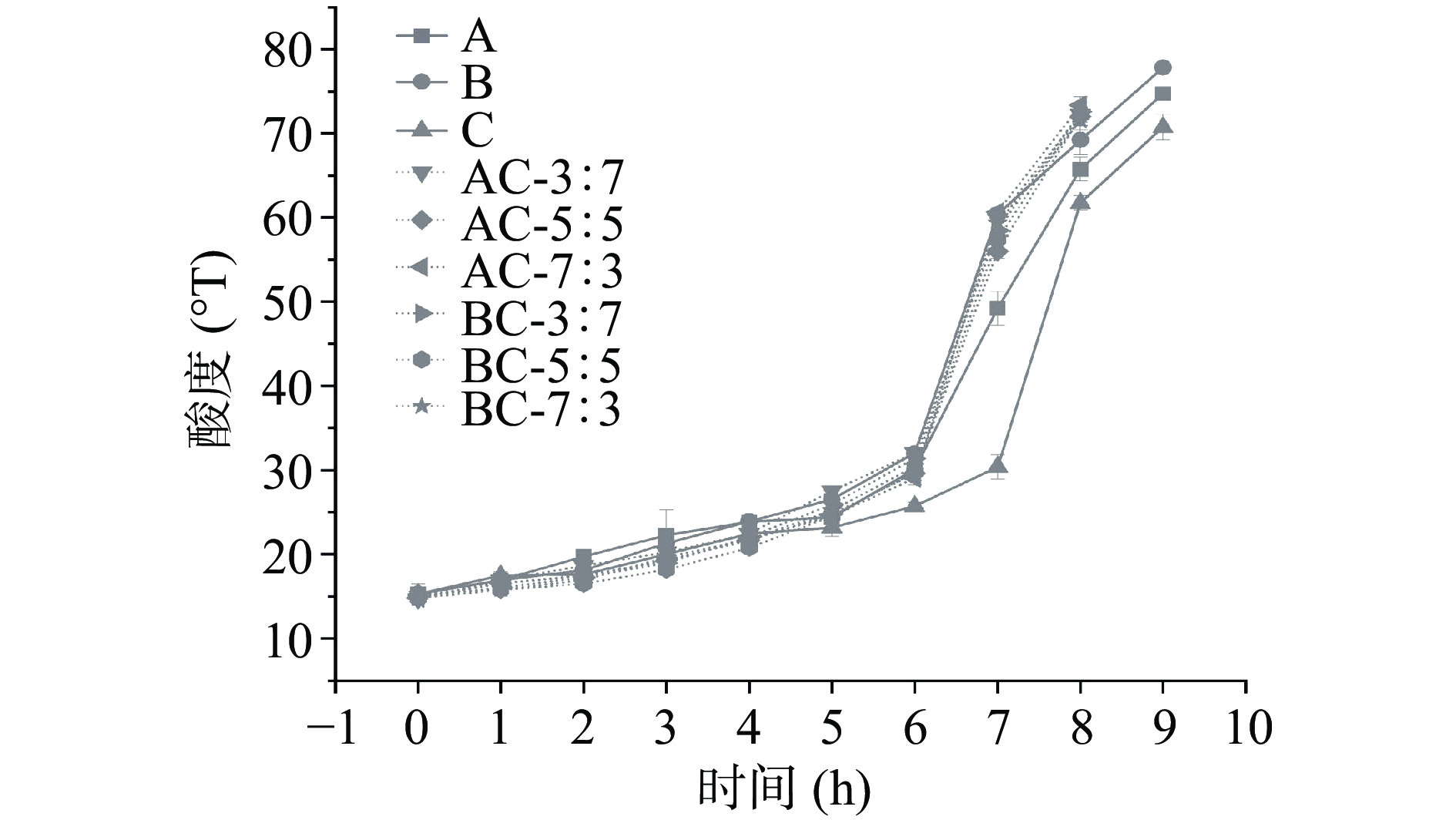
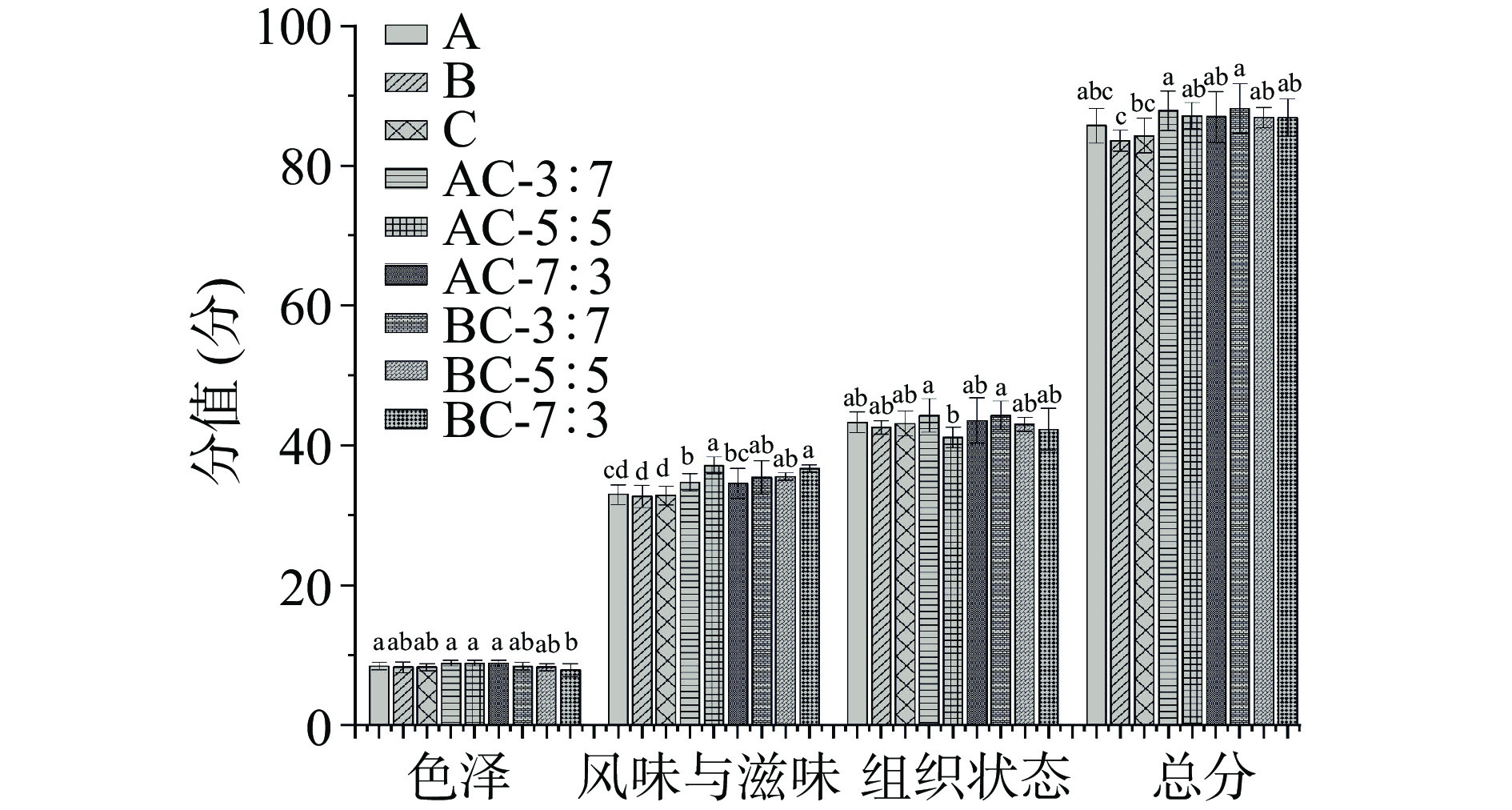
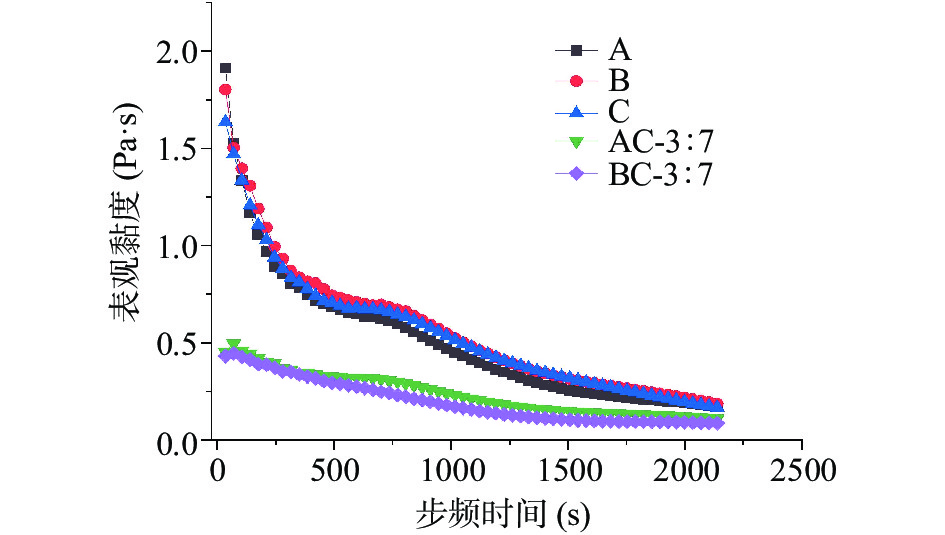
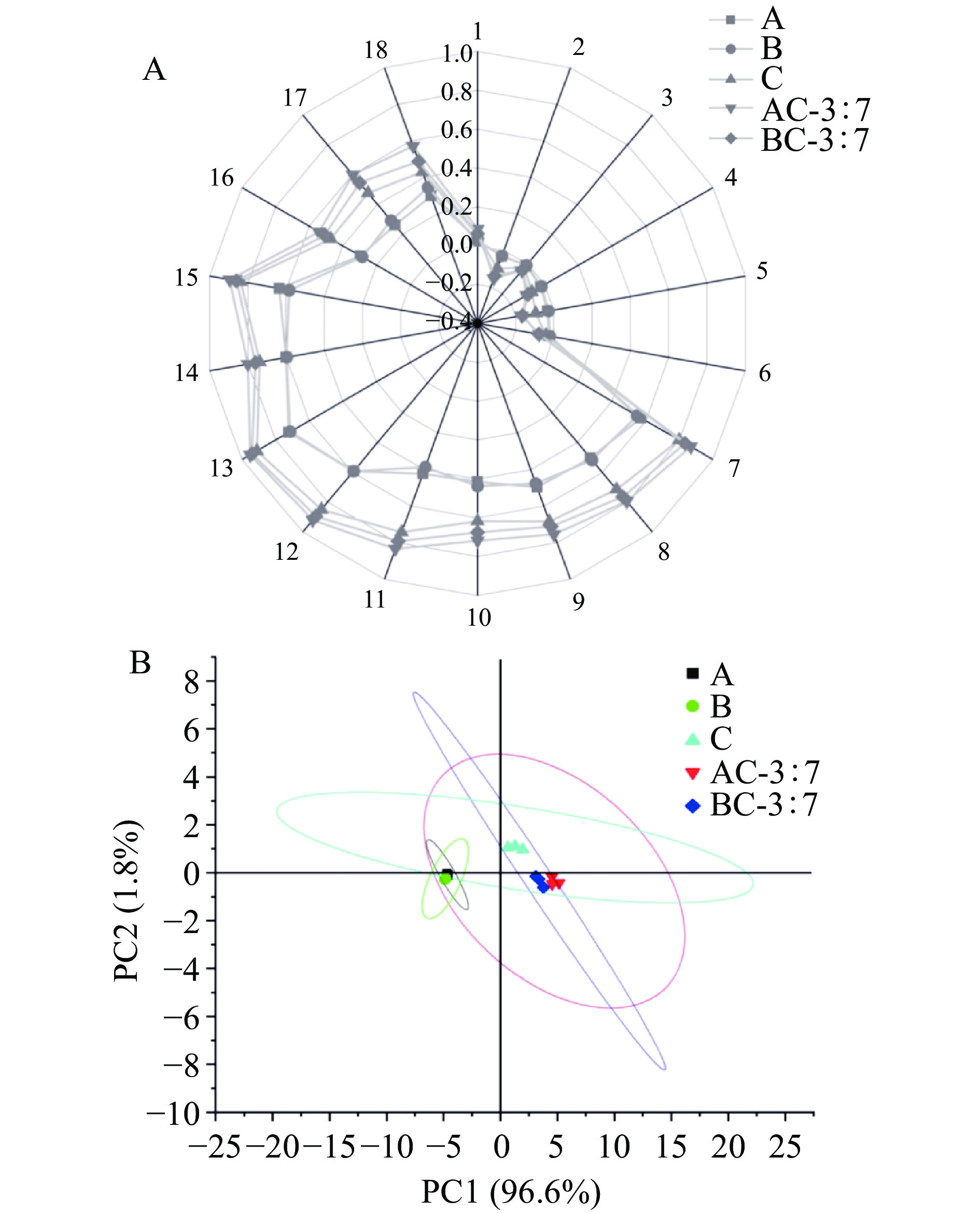
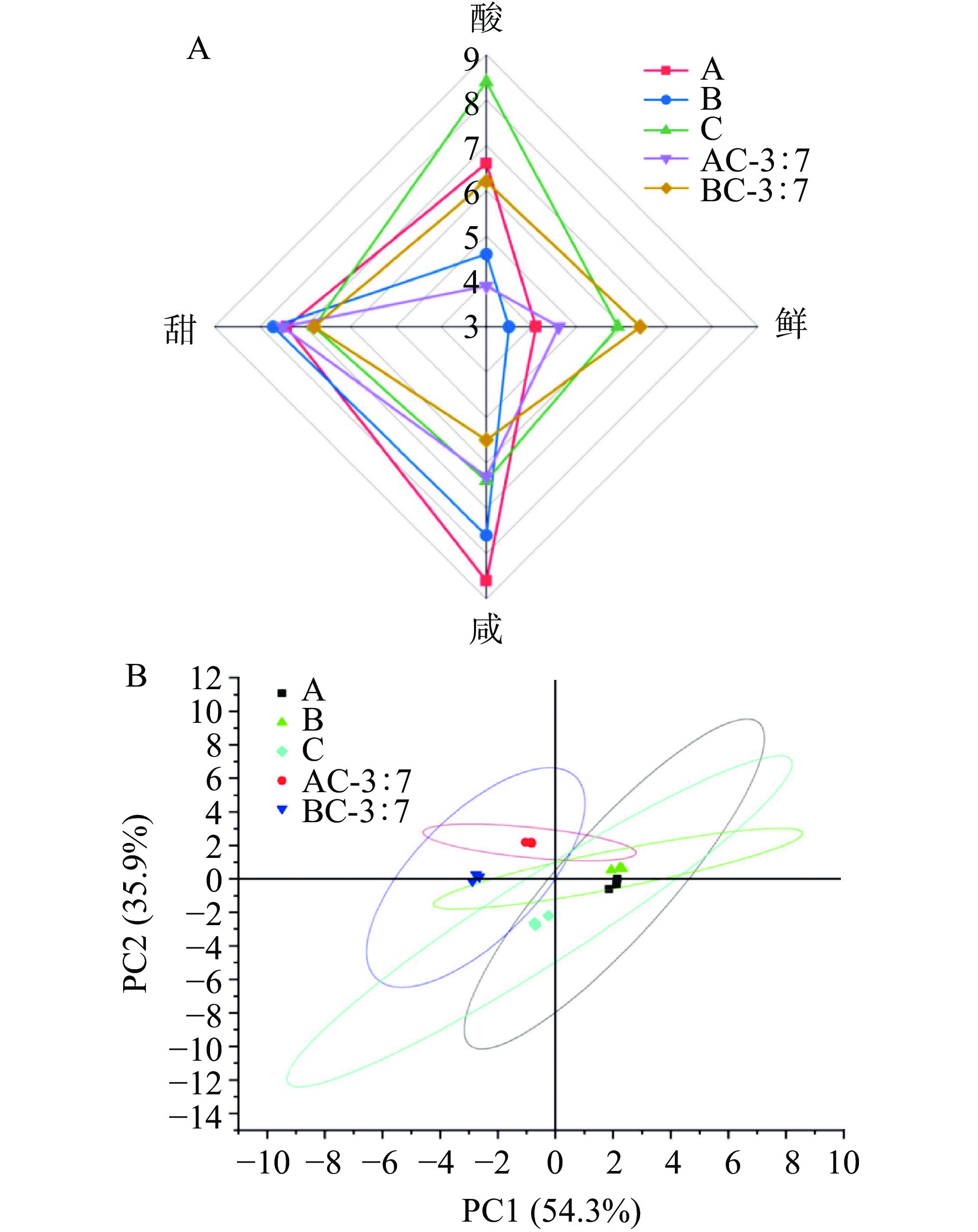
 下载:
下载:



